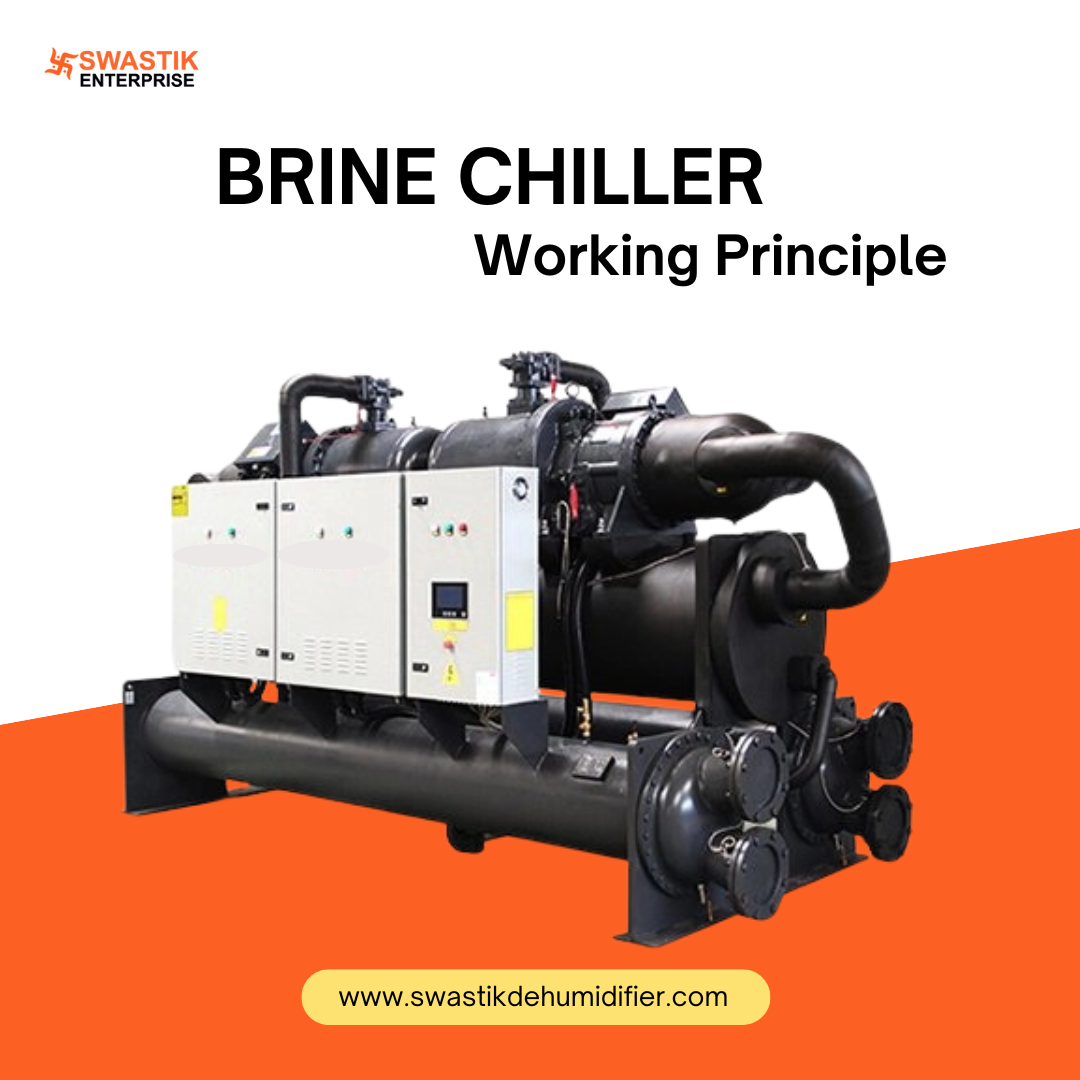Brine Chiller Working Principle

Brine Chiller
Okay, let’s not pretend everyone wakes up thinking about brine chillers
Unless you’re running an ice cream factory, or you’re in pharma or cold storage, you probably think a brine chiller sounds like a machine from a sci-fi film.
But if your job depends on cooling things quickly and keeping temperatures extremely low, then yes, you need to know what brine chiller does and how it works.
Spoiler: It’s cooler than your fridge. Literally.
What Even Is a Brine Chiller?
Imagine you’ve got a regular chiller, like your AC or your cold room.
Now give it a little upgrade so it can handle sub-zero temperatures while chilling fluids that don’t freeze easily. That’s your brine chiller.
It doesn’t chill Coke or Pepsi; it chills liquids like brine (which is essentially salt water, FYI) and other antifreeze liquids, such as glycol.
Why? Because regular water would just freeze up and mess up your whole system.
Salt water stays liquid at lower temperatures perfect for industries that want extreme cold without the drama of frozen pipes.
Who’s using This Stuff?
If you’re in:
- Ice cream production
- Beverage chilling
- Chemical processing
- Plastic moulding
- Cold storages
- Breweries
- Pharma labs
Then yes, you’ve either got a brine chiller, or your workday is way harder than it needs to be.
Brine Chiller Working Principle
Alright, let’s break this down without sounding like a textbook exploded.
There are three big players in this cooling game:
1. Compressor
This guy is the muscle; it compresses the refrigerant, makes it hot, and sends it off to the next part.
2. Condenser
This is the cool-down zone. Hot refrigerant flows in, releases its heat, and turns into a liquid.
3. Evaporator + Brine Circuit
This is where it becomes interesting. The refrigerant is cold and enters the evaporator, which is near the brine solution (salt water or glycol mixture). The refrigerant removes heat from the brine to leave it super chilled.
This chilled brine is pumped to circulate through the system, and cools your tanks, your moulds, and your storage areas.
This slightly warmer refrigerant makes its way back to the compressor and the process repeats itself in a continuous chain of frozen perfection.
Why Use Brine Instead of Just Water?
That is a great question, because water is dramatic. It freezes at zero degrees, it expands, it cracks your pipes, and your boss yells at you. Brine is not so easy to freeze; you can cool it to -20 °C or even colder.
No blockage, no burst, no regrets. Also, brine carries heat better, which means your system works faster and your energy bills don’t look like a horror film.
Types of Brine Used
Not all brine is born equal:
- Sodium chloride (basic saltwater)
- Calcium chloride (even lower freezing point)
- Glycol (used where corrosion is a concern)
Each one has its vibe and you choose based on your needlow temp, food-grade safety, or anti-corrosion.
Where Do You Put These Chillers?
They don’t sit on your kitchen counter; they’re built like tanks. Usually placed:
- Outside buildings
- In plant rooms
- Attached to process tanks
- Under production lines
You can get air-cooled or water-cooled versions too, depending on your location and power supply.
Maintenance Tips
Wanna keep your brine chiller running smooth? Here’s the Myriam checklist:
- Check brine concentration monthly
- Clean filters and coils
- Watch out for corrosion
- Drain and refill every season
- Don’t run it dry (seriously, it’ll cry)
Bonus Pro Tip: Always insulate your brine pipelines. If not, they’ll sweat more than you during a summer, and that leads to water loss, temperature drops, and angry supervisors.
Conclusion
The Brine Chiller Working Principle is simple when you explain it like this: you’ve got a cycle, cold stuff chills brine, brine chills your process, and everyone’s happy.
No ice build-up, no temperature tantrums, just solid cooling without drama.
So next time someone drops the term Brine Chiller, you can nod like a pro and explain how it works while eating your now-perfectly-preserved kulfi.
Cool, right? Pun 100% intended.
